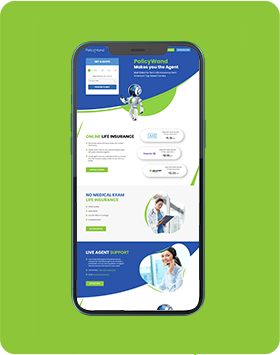How Does a Life Insurance Rider Work?
Not every life insurance policy will meet every one of your needs. Cancer, heart attacks and accidents can wipe out your income long before they end your life.
The supplemental coverage a life insurance rider provides guides your base policy closer to what you and your family may need if the unthinkable happens and threatens your financial security. And most come at a nominal fee.
And while you can purchase a stand-alone long-term care or accidental death or dismemberment policy, riders attached to your base life insurance policy are less expensive and provide the same coverage.
So what insurance riders are available to you and how can each protect you and your family against financial disaster in the wake of a disastrous event?
Life Insurance Accelerated Death Benefit
Also known as an ADB or living benefit, an accelerated death benefit allows you to use your base policy’s payout to cover the cost of medical care for a terminal or chronic illness while you are still alive. Medical services covered include hospice, nursing home or private home care.
How an accelerated death benefit works:
- Your illness must meet certain criteria to qualify and different states have different eligibility requirements.
- Your insurance company may use your entire death benefit or a percentage of it, depending on the care you require. For example, an insurance company may pay 2% for nursing home care and 1% for a private caretaker.
- Your beneficiaries receive what is left of the benefit after your death.
- Accelerated death benefits are broken down into two specific riders: Chronic Illness and Long-Term Care (LTC).
Chronic illness rider
This life insurance rider covers the cost of medical care for illnesses from which you will not recover. Although similar to a Long-Term Care (LTC) rider, there are differences, as you will see below.
How a Chronic Illness rider works:
- A medical professional must certify that you aren’t able to perform two of six Activities for Daily Living (ADL) such as eating, moving, bathing, dressing, and toileting or continence, and other eligibility requirements.
- Unlike a Long-Term Care rider, this rider only pays expenses for one unrecoverable illness over your entire lifetime.
- Payouts may begin immediately or after a short waiting period.
- Payouts are taken from a capped percentage of your base policy’s death benefit for the remainder of your life.
- There are no restrictions on how you use the benefit.
Long term care (LTC) rider
This life insurance rider provides coverage for medical care for an illness or disability that prevents you from performing daily activities for 90 days or more.
How a Long-Term Care rider works:
- As with a chronic illness rider, a medical professional must certify that you aren’t able to perform two of six Activities for Daily Living (ADL) as eating, moving, bathing, dressing, and toileting or continence, and other eligibility requirements.
- This rider costs more than the chronic illness rider but is less expensive than a standalone LTC insurance policy.
- You can use it for more than one health event lasting more than 90 days during one’s lifetime.
- Unlike a chronic illness rider, this one pays out as a reimbursement or lump sum up to 100% of base your policy’s death benefit.
Waiver of Premium rider
A Waiver of Premium rider frees you from premium payments if you are no longer able to work.
How a Waiver of Premium rider works:
- This rider requires a statement from the Social Security Administration and a doctor to certify disability and you must continue to show proof of your disability every few years.
- It does not cover pre-existing conditions.
- It can take up to six months to pay out but once approved, you’ll be reimbursed for premiums paid during the waiting period.
- Your insurance company may require that you add your Waiver of Premium at the time you purchase your base policy.
- Be sure to ask how your life insurance company defines a disability. Each company defines it differently.
Accidental Death and Dismemberment Insurance (AD&D)
An accidental life insurance rider pays a death benefit if you die or lose a limb or physical function that prevents you from working. Because an accidental life insurance rider is limited to accidents and thus less of a risk to your insurance company, it’s an inexpensive option.
How an AD&D rider works:
- This rider pays the lump sum of your death benefit if you die due to an accident.
- It pays a percentage of your death benefit if you suffer a disability due to an accident, such as losing a limb, your sight, speech or other function as a direct result of the accident.
- Insurance companies have different requirements that must be met for your beneficiaries to receive the payout, such as the type of accident and injuries suffered.
- This rider is limited only to an accident—not a heart attack or a chronic or terminal illness.
Family Income Benefit Rider
A family income rider provides your family a monthly payment equal to your income in the event of your death. This rider payout is in addition to the lump-sum death benefit your base policy provides.
How a Family Income Benefit rider works:
- You set the amount of time your family will receive the monthly payment.
- Your family receives the lump-sum death benefit once this rider period ends, although you can set up a distribution plan customized to your family’s needs.
Child Term Rider
A child term insurance rider provides a death benefit should a child die before an age you determine.
How a Child Term rider works:
- This rider pays out as a lump sum.
- You can convert it to a permanent policy when the child outlives the rider term.
Return of Premium Rider
A Return of Premium rider reimburses the premiums paid if you outlive your policy.
How a Return of Premium rider works:
- You can use your refund to purchase a new policy without a medical exam.
- This rider returns only the money you paid for premiums. Not fees or additional riders.
Guaranteed Insurability Rider
This rider allows you to increase your death benefit every three or five years.
How a Guaranteed Insurability rider works:
- Your insurance company determines the time frame for benefit increases.
- This rider does not require a medical exam or health questionnaire.
- There are no rate changes should your health decline.
Accidents and illnesses happen. It’s up to you to decide if a rider is more expensive than the costs you may incur without one. It’s best to speak to an insurance specialist to determine what’s right for you and your family.






